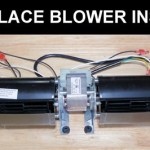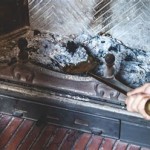The Enduring Appeal of Fireplaces with Gas
Fireplaces have long been associated with warmth, comfort, and a sense of home. While traditional wood-burning fireplaces possess a certain rustic charm, they are often accompanied by practical challenges such as procuring and storing firewood, managing smoke and ash, and complying with environmental regulations. Gas fireplaces offer a compelling alternative, blending the aesthetic appeal of a traditional fireplace with the convenience and efficiency of modern technology. These appliances provide a clean-burning and easily controllable source of heat, making them a popular choice for homeowners seeking both ambiance and functionality.
A gas fireplace functions by burning natural gas or propane to generate heat and create the visual effect of a traditional fire. The gas is supplied through a pipeline or from a propane tank and is ignited by an electronic ignition system or a pilot light. The flames dance around artificial logs, stones, or glass beads, replicating the appearance of burning wood or other fuels. Gas fireplaces are available in a wide range of styles and sizes, from freestanding units to built-in models, allowing homeowners to select an option that complements their existing décor and meets their heating needs.
The popularity of gas fireplaces stems from a confluence of factors. They offer a significant improvement in convenience compared to wood-burning fireplaces, requiring no manual feeding of fuel and producing minimal ash. Gas fireplaces also provide precise temperature control, allowing users to adjust the heat output to their desired level. Furthermore, gas fireplaces are generally more energy-efficient than traditional fireplaces, converting a higher percentage of fuel into usable heat. The installation process, while often requiring professional assistance, is typically straightforward, and the ongoing maintenance requirements are relatively minimal.
Key Point 1: Understanding the Different Types of Gas Fireplaces
The market for gas fireplaces offers a diverse range of options, each with its own characteristics and advantages. Understanding the different types of gas fireplaces is crucial for making an informed decision that aligns with specific needs and preferences. The primary categories include vented fireplaces, vent-free fireplaces, and gas fireplace inserts.
Vented gas fireplaces, also known as direct-vent fireplaces, are designed to exhaust combustion byproducts outside the home through a dedicated vent. These fireplaces typically feature a sealed combustion chamber, which draws air from outside for combustion and expels exhaust gases directly outdoors. Vented fireplaces offer superior air quality and are generally considered the safest option. They provide a realistic flame appearance and can generate significant heat, making them suitable for both supplemental and primary heating purposes. The installation of a vented fireplace typically requires a more complex venting system, which can add to the overall cost.
Vent-free gas fireplaces, as the name suggests, do not require a vent to exhaust combustion byproducts. Instead, they utilize advanced burner technology to ensure complete combustion, minimizing the production of harmful emissions such as carbon monoxide. Vent-free fireplaces are typically equipped with oxygen depletion sensors (ODS), which automatically shut off the gas supply if the oxygen level in the room drops to an unsafe level. While vent-free fireplaces offer greater installation flexibility and can be placed in virtually any room, they are subject to certain restrictions and regulations in some jurisdictions. It is crucial to consult local building codes and manufacturer guidelines before installing a vent-free gas fireplace.
Gas fireplace inserts are designed to be installed within an existing wood-burning fireplace. They provide a convenient and efficient way to convert a traditional fireplace into a gas-fueled appliance. Gas fireplace inserts typically feature a sealed combustion chamber and a dedicated venting system, ensuring safe and efficient operation. They offer improved heating performance and reduced emissions compared to traditional wood-burning fireplaces, while retaining the aesthetic appeal of a fireplace.
Key Point 2: Factors to Consider When Choosing a Gas Fireplace
Selecting the right gas fireplace requires careful consideration of several factors, including the size of the room, the desired heating capacity, the style of the fireplace, and the budget. Evaluating these factors will help ensure that the chosen fireplace meets the specific needs and provides years of reliable performance.
The size of the room is a critical factor in determining the appropriate heating capacity of the fireplace, measured in British Thermal Units (BTUs). A larger room will require a higher BTU output to effectively heat the space. Consult a professional or use online calculators to estimate the appropriate BTU rating for the room. Over-sizing the fireplace can lead to overheating and discomfort, while under-sizing it can result in inadequate heating.
The heating capacity of the fireplace should also be considered in relation to the overall heating system of the home. If the gas fireplace is intended to serve as a primary heating source, a higher BTU output will be necessary. If it is intended for supplemental heating or aesthetic purposes, a lower BTU output may suffice. The desired heating capacity will influence the type of gas fireplace chosen, with vented fireplaces generally offering higher BTU outputs than vent-free models.
The style of the fireplace should complement the existing décor of the room. Gas fireplaces are available in a wide range of styles, from traditional to contemporary, with various options for logs, stones, glass beads, and firebox designs. Consider the overall aesthetic of the room and choose a fireplace that enhances the visual appeal. The style of the fireplace can also impact the cost, with more elaborate designs typically commanding a higher price.
The budget is a significant factor in any purchasing decision. Gas fireplaces range in price from a few hundred dollars to several thousand dollars, depending on the type, size, features, and brand. It is important to establish a budget before beginning the shopping process and to stick to it as closely as possible. Consider the installation costs, which can vary depending on the complexity of the project. Factor in the ongoing operating costs, including the cost of gas and any maintenance expenses.
Key Point 3: Installation and Maintenance of Gas Fireplaces
Proper installation and regular maintenance are essential for ensuring the safe and efficient operation of a gas fireplace. While some homeowners may be tempted to perform the installation themselves, it is generally recommended to hire a qualified professional. Regular maintenance, including cleaning and inspection, will help extend the lifespan of the fireplace and prevent potential problems.
Installation of a gas fireplace typically involves connecting the gas line, installing the venting system (if required), and securing the fireplace in place. A qualified professional will have the necessary expertise and tools to perform the installation safely and in accordance with local building codes. Improper installation can lead to gas leaks, carbon monoxide poisoning, and other hazards. It is crucial to verify that the installer is licensed and insured before hiring them.
Regular maintenance of a gas fireplace should include cleaning the burner assembly, inspecting the venting system, and checking the gas connections for leaks. The burner assembly can accumulate dust and debris over time, which can affect the flame appearance and efficiency. The venting system should be inspected annually to ensure that it is free of obstructions. A gas leak can be detected by smelling for a distinctive odor or by using a gas leak detector. If a gas leak is suspected, immediately shut off the gas supply and contact a qualified professional.
In addition to regular maintenance, it is important to schedule a professional inspection of the gas fireplace at least once a year. A qualified technician can identify potential problems that may not be readily apparent, such as corroded gas lines or faulty ignition systems. A professional inspection can help prevent costly repairs and ensure the continued safe and efficient operation of the fireplace. Following the manufacturer's recommendations for maintenance and scheduling regular professional inspections will help extend the lifespan of the gas fireplace and provide years of reliable performance and the desired ambiance.

Gas Fireplaces Fireplace Xtrordinair Made In America

Enviro S Gas C72 Linear Fireplace

12 Types Of Gas Fireplaces You Need To Know

Nordik 34i Kozy Heat Fireplaces

Gas Fireplaces Fireplace Series Napoleon

A Guide Helpful Tips For Gas Fireplaces Stoves

Enclosed Gas Fireplaces Jetmaster

Enviro G42 Gas Zero Clearance Fireplace Fergus

You Ll Love Having A Gas Fireplace In Your Niagara Falls Home

Traditional Premium Gas Fireplaces Made In America Fireplace Xtrordinair








